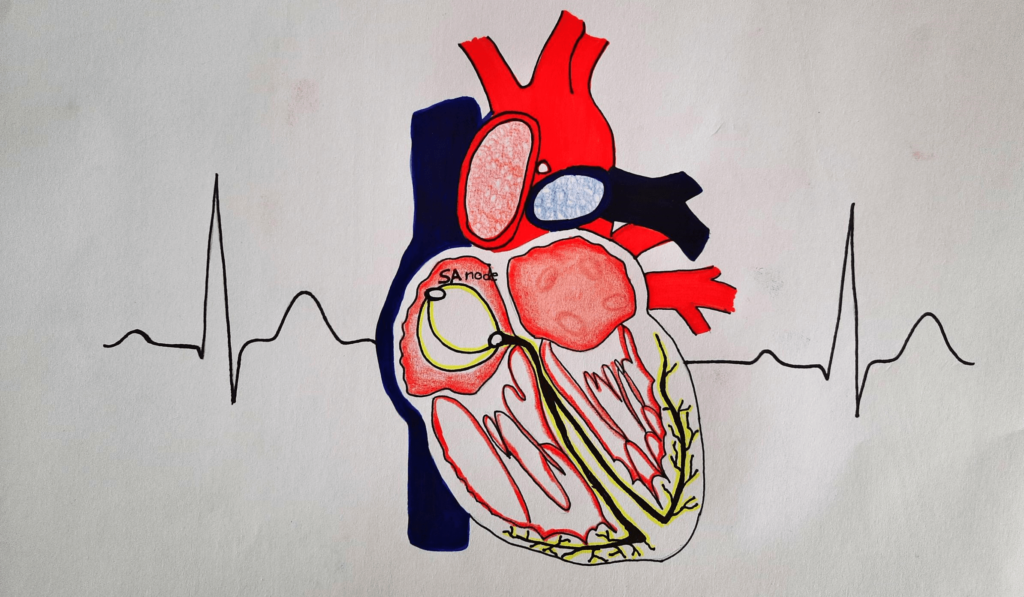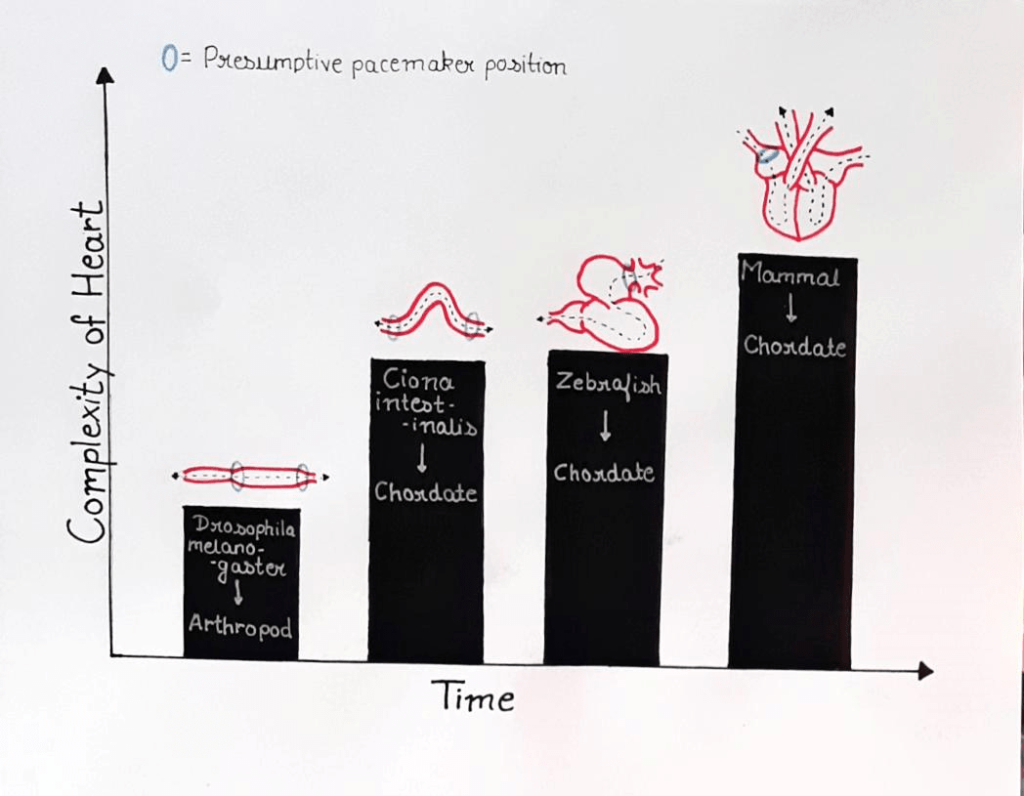The human heart is known for its predominant function of pumping blood to parts of the body. The four chambers in the heart are responsible for carrying out this function. The right atrium (auricle) receives deoxygenated blood and the left atrium receives oxygenated blood, which they pour into the ventricles. The right ventricle pumps blood to the lungs through the pulmonary artery for oxygenation and the left ventricle pumps blood to the aorta, which then distributes it to the whole body. This is the main pumping function of our heart.

We all know that the brain is an important organ that directs all the other organs to carry out their respective functions. For that matter, the heart does not need the brain to keep beating. This is why we call our heart myogenic. In medical terms, myogenic refers to an impulse originating from muscle tissue without the external stimuli from the brain or spinal cord. No nerve impulse is involved in this process.
In the human heart, the contraction is initiated by a special modified cardiac muscle known as the sinoatrial node (also called the SA node). Since the heartbeat is initiated by the SA node and the
impulse of contraction originates in the heart itself, the human heart is termed myogenic. This can also be known as the auto-rhythmic activity of the heart.
This SA node is present near the opening of the precaval into the right atrium. There is another node called the atrio-ventricular node (AV node) which is found near the inter atrialuricle septum range. There are muscle fibres called ‘Bundle of HIS’ which joins the AVN and extends to the inter ventricle septum range. This system together generates an impulse to start the heartbeat. ‘Bundle of His’ is named after the cardiologist William His Junior as he was the one who discovered it.

But what if our pacemaker becomes faulty and inoperable? Can we die instantly? Well, if our pacemaker is causing trouble like irregular hearts beats, we will feel some symptoms. It will not stop working suddenly but will become non-operational overtime. In this case, we have to fit in an artificial pacemaker. An artificial pacemaker is a medical device that generates impulses using electrodes to cause the heart chambers to contract and carry on their work. It works as a natural pacemaker but we have to be careful by using it properly and with precautions.
Are we the only living beings having a myogenic heart? Not at all! Vertebrates (organisms with a backbone), tunicates (a marine invertebrate), and some molluscs (the second largest phylum of invertebrates) also have myogenic hearts.
So in a nutshell, our heart generates impulses on its own with the help of a natural pacemaker. Many don’t know this and believe that if the brain stops working, even the heart will stop. Well not exactly. Because of its auto-rhythmicity, the heart can continue to beat for a short time after brain death, or after being removed from the body.

We can say that the brain gets a little break here as the heart beats on its own. Even though there are self-generated heartbeats, the autonomic nervous system, which is the part of the nervous system, is responsible for its sympathetic and parasympathetic functions that help accelerate or retard the heartbeat. But it does not control the generation of the heartbeat.
In biological terms, the neurogenic heartbeat is initiated by a nerve impulse caused by a nerve ganglion near the heart. Whereas the myogenic heartbeat is initiated by modified heart muscles. Once separated from the body, the neurogenic heart stops beating while the myogenic heart continues to beat for some time.
That is the simple answer to why the patients who are admitted for any brain injuries still have a beating heart. We can say that the heart’s beating is independent of the brain. But still, it does have to answer the brain in certain situations. Ah! Doesn’t this scenario look familiar? Yes, when we have to answer our parents for some things but we can still make some decisions on our own.
Writer:

Gargi Phadnis
Gargi a student of class 10th at Ryan International School, Pune. She has always believed that everything related to us is connected to the universe in many ways. She is fascinated by human anatomy and genetics and wishes to know more about it. Gargi also wishes to dive deeper to understand how to interpret the human mind. She wants to pursue a career in medical science while balancing her love for writing. She says, “I would love to enthral everyone with my quirky thoughts, penned down.”
Illustrator:

Shruti Morjaria
Shruti Morjaria is a self-learnt science artist and just another papercut survivor! She is completing her degree in cell and molecular biology. While she juggles between work and life, creativity keeps her sane. She says, “All you gotta do is be a passionate scribbler and see how creativity overflows!”

Excellent information about a vital organ of our body!!
Excellent.
Very cool and interesting. Did not know half the things written here. Please keep making articles like this.